This article was co-authored by Andrea Rudominer, MD, MPH. Dr. Andrea Rudominer is a board certified Pediatrician and Integrative Medicine Doctor based in the San Francisco Bay Area. Dr. Rudominer has over 15 years of medical care experience and specializes in preventive health care, obesity, adolescent care, ADHD, and culturally competent care. Dr. Rudominer received her MD from the University of California, Davis, and completed a residency at the Lucile Packard Children's Hospital at Stanford University. Dr. Rudominer also has an MPH in Maternal Child Health from the University of California, Berkeley. She is a Member of the American Board of Pediatrics, a Fellow of the American Academy of Pediatrics, a Member and Delegate of the California Medical Association, and a Member of the Santa Clara County Medical Association.
There are 17 references cited in this article, which can be found at the bottom of the page.
wikiHow marks an article as reader-approved once it receives enough positive feedback. In this case, 100% of readers who voted found the article helpful, earning it our reader-approved status.
This article has been viewed 790,012 times.
Cold sores, also called fever blisters, appear when your body is under stress; for example, when you have a fever. These sores are actually the result of a herpes simplex virus -1 (HSV-1) infection. Cold sores are common in the areas around the mouth, but can also occur on the face, inside the nose, or in the genital area. Genital herpes is more often caused by herpes simplex virus 2, but either virus can appear in either area. If you discover that you have a cold sore, here are some things you can do to get rid of it.
Steps
Recognizing the Development of Cold Sores
-
1Understand that HSV-1 infections are common. Up to 60% of Americans have HSV-1 by adolescence; 85% by the time they reached their 60s. In Britain, about seven in ten people have it, but only one in five are aware of it. This is because some people carry the infection, but don’t have any symptoms.
-
2Recognize the symptoms of the first outbreak. The symptoms of a cold sore are consistent, but the first outbreak is different. At that time, you'll see symptoms that you won't experience again during later outbreaks. These one-time symptoms include:[1]
- Fever
- Painful or eroded gums if the cold sore is in the mouth
- Sore throat
- Headache
- Swollen lymph glands
- Muscle aches
Advertisement -
3Look for the predictive signs of subsequent outbreaks. After your first outbreak has passed, you'll be able to predict when cold sores are going to appear by looking for early indicators. The area where the sore will appear will suddenly feel tingly and itchy. You may also experience some numbness in the area.[2] This stage, also called the prodromal stage, is experienced by 46% to 60% of people who have cold sores.[3]
- Other early symptoms include inflammation, redness, hypersensitivity or soreness in the exact area the blisters will appear.
-
4Watch for the first redness and swelling. When a cold sore is first appearing, it can look like the start of a pimple. It will be sore — possibly painful. This area will be red and raised; the skin surrounding the raised area will also be red. You may also notice several small blisters that develop together, then merge as other blisters fill in the area between them.
- Cold sores can vary in size, ranging from 2 – 3 mm to 7 mm.
-
5Be aware that the blister is filled with virus particles. The raised areas take on the appearance of a blister. As the body fights the HSV-1 virus, white blood cells rush to the area and the blister fills with clear fluid containing the virus.[4]
- Because cold sores are filled with infectious fluid, you should never pick at them. If you get the virus on your hands, you can spread it around to other people or get it in your eyes, or spread it to your genitals.
-
6Wait for the blister to break. This is the third and most painful stage in the development of a cold sore. The area will be moist, with a red area around the open sore. This period, when the blister leaks fluid, is the most contagious.[5] Make sure to wash your hands regularly if you touch your face to prevent spreading the infection. It will take up to three days for the cold sore to move to its next stage.[6]
-
7Do not pick at the scab when the blister dries. After the blister has burst, a crust will form over the top of the blister, followed by a protective scab. As the sore heals, the scab may crack open and bleed. You may also experience itching and pain during this stage.[7] Avoid touching the sore, as you can slow down the healing process by reopening the wound.
-
8Avoid spreading the infection while the cold sore heals. You remain contagious until the scab falls off naturally to reveal intact, healthy skin. In this final healing stage when the scab falls off, the skin beneath it will be dry and a little flaky. The area may also be a little swollen and red.[8] From the start of tingling and itching until the scab comes off can take between 8 and 12 days.
- Be careful not to share glasses or utensils with anybody until the cold sore has healed completely. Do not kiss anyone or place your cold sores into contact with others in any way.
- Keep your hands off your face as best you can, as infectious fluid can be transferred to you skin. This, in turn, can spread infection to others, or spread it to other parts of your own body.
-
9Distinguish a cold sore from similar blemishes. Canker sores and mucositis can be mistaken for cold sores, but aren't caused by the herpes virus.
- Canker sores appear inside the mouth, often near where the cheeks/lips meet the gums. People who wear braces can get them where the braces rub against the cheeks. Doctors believe they can have many causes: injury, certain toothpastes, food sensitivities, stress, allergies, and inflammatory or immune disorders.[9]
- Mucositis is the term used to describe the sores that appear in the mouth and esophagus during chemotherapy. Chemotherapy kills rapidly dividing cancer cells. But it can't distinguish cancer from the cells in the mouth, which also divide rapidly. The resulting open sores are extremely painful.[10]
Treating a Cold Sore
-
1Be aware that there is no cure for a herpes simplex virus infection. Without exception, the virus remains permanently in the body once it's been introduced. The virus can stay dormant, without activity, for years — in fact, most people who have herpes don't even know they have it.[11] Regardless, the virus continues to live inside the body and will reappear when conditions are right.[12] If your infection causes you to break out with cold sores, you will continue to get cold sores for the rest of your life.
- Don’t panic, though! Cold sores are a manageable symptom that don’t have to interfere with your life. There are several things you can do to get rid of a cold sore when one develops.
-
2Use over-the-counter (OTC) medications. Docosanol (also known as Abreva) is an FDA approved medication for the treatment of cold sores. Its active ingredients are benzyl alcohol and light mineral oil, and it can reduce the duration of the outbreak to just a couple days. For the best results, begin use as soon as you notice the tingling and itching that suggests an oncoming outbreak. However, you can still begin use after the blister has already appeared.[13]
-
3Discuss prescription medication with your doctor. Some people may only get cold sores sporadically throughout their lifetime, while others may be plagued by frequent outbreaks. If frequent outbreaks are becoming a hassle for you, you may benefit from antiviral medication to prevent them. Talk to your doctor about the possibility of getting a prescription for acyclovir (Zovirax), valacyclovir, famciclovir, or Denavir.[14]
-
4Reduce the pain from a cold sore. There may not be a cure, but there are many treatments that will reduce the pain from the blisters. FDA-approved pain relievers for external use include benzyl alcohol, dibucaine, dyclonine, juniper tar, lidocaine, menthol, phenol, tetracaine and benzocaine.[15]
- You can also apply an ice pack to the cold sore to ease pain and discomfort. Be sure to protect the skin from direct contact with ice by using a washcloth or rag as a barrier.[16]
-
5Use coconut oil to speed up the healing process.One of its key components is lauric acid, which contains a molecule called "monocaprin." In laboratory testing with monocaprin, researchers found it highly effective against HSV-1.[17]
- Begin using the coconut oil as soon as you notice the cold sore developing.
- Apply it with a Q-tip instead of your finger, as you don't want to touch a cold sore and spread the infection around.
-
6Apply lysine to shorten the outbreak. Herpes simplex viruses need an amino acid called "arginine" to multiply or grow. "Lysine" is an amino acid that counteracts the reproductive effects of arginine. Lysine is available both as a topical product (ointments) and as an oral supplement (pills).[18] Use these products daily while you have an outbreak.
- You can also make your own topical lysine application at home. Crush a lysine pill and mix it with a small amount of coconut oil. Apply the paste directly to the blister.
- This way you can attack the cold sore both with a pill and with an external treatment.
Preventing Cold Sores
-
1Learn how the virus spreads to prevent an HSV-1 infection. Cold sores are very contagious and can be spread even in the early stages of an outbreak, before a blister develops. The virus can spread from person to person through shared utensils, razors, and towels or through kissing. Oral sex can also spread herpes. HSV-1 can spread to the genital area, and HSV-2 can spread to the lips.[19]
-
2Avoid foods rich in arginine. The herpes virus uses the amino acid arginine to grow and replicate. When you take in a lot of arginine through your food, your body is more vulnerable to attacks from the virus. As a result, you will have more frequent cold sore outbreaks.[20] Avoid the following arginine-rich foods:
- Chocolate
- Nuts
- Peanuts
- Seeds
- Cereal grains
-
3Take in a lot of lysine. Even when you're not having an outbreak, it's a good idea to take a daily lysine supplement to prevent future outbreaks. 1 – 3 grams of lysine supplement may reduce the number and severity of herpes outbreaks.[21] You can also make a point to work foods that naturally contain large amounts of lysine into your regular diet:[22]
- Fish
- Chicken
- Beef
- Lamb
- Milk
- Cheese
- Beans.
-
4Reduce your exposure to cold sore triggers.[23] Though the virus works differently from person to person, there are common triggers known to cause herpes outbreaks. By reducing these triggers (if you can), you may experience fewer outbreaks:
- Viral fever
- Hormonal changes, such as menstrual periods or pregnancy
- Changes in your immune system, like severe burns, chemotherapy, or anti-rejection drugs after organ transplants[24]
- Stress
- Fatigue
- Exposure to sun and wind
-
5Improve your overall health.[25] The healthier your body is as a whole, the better it will be able to suppress the virus, thus reducing the frequency of outbreaks.
- Eat a healthy diet with foods rich in lysine.
- Reduce your intake of arginine-rich foods.
- Sleep at least 8 hours each night.
- Exercise each day to help reduce stress levels.
- Take vitamin supplements to reduce your risk of developing a viral fever.
- Wear protection on your lips when you're out in the sun.
Expert Q&A
-
QuestionWhat causes cold sores?
 Andrea Rudominer, MD, MPHDr. Andrea Rudominer is a board certified Pediatrician and Integrative Medicine Doctor based in the San Francisco Bay Area. Dr. Rudominer has over 15 years of medical care experience and specializes in preventive health care, obesity, adolescent care, ADHD, and culturally competent care. Dr. Rudominer received her MD from the University of California, Davis, and completed a residency at the Lucile Packard Children's Hospital at Stanford University. Dr. Rudominer also has an MPH in Maternal Child Health from the University of California, Berkeley. She is a Member of the American Board of Pediatrics, a Fellow of the American Academy of Pediatrics, a Member and Delegate of the California Medical Association, and a Member of the Santa Clara County Medical Association.
Andrea Rudominer, MD, MPHDr. Andrea Rudominer is a board certified Pediatrician and Integrative Medicine Doctor based in the San Francisco Bay Area. Dr. Rudominer has over 15 years of medical care experience and specializes in preventive health care, obesity, adolescent care, ADHD, and culturally competent care. Dr. Rudominer received her MD from the University of California, Davis, and completed a residency at the Lucile Packard Children's Hospital at Stanford University. Dr. Rudominer also has an MPH in Maternal Child Health from the University of California, Berkeley. She is a Member of the American Board of Pediatrics, a Fellow of the American Academy of Pediatrics, a Member and Delegate of the California Medical Association, and a Member of the Santa Clara County Medical Association.
Board Certified Pediatrician & Integrative Medicine Doctor Cold sores are caused by the herpes simplex virus, which is extremely common. There is some evidence that eating a diet that's rich in the amino acid lysine can help prevent cold sores. You can get this from meat, fish, and dairy. If you're trying to keep cold sores from popping up, avoid foods with include high levels of arginine, like nuts, grain, chocolate, and refined sugar.
Cold sores are caused by the herpes simplex virus, which is extremely common. There is some evidence that eating a diet that's rich in the amino acid lysine can help prevent cold sores. You can get this from meat, fish, and dairy. If you're trying to keep cold sores from popping up, avoid foods with include high levels of arginine, like nuts, grain, chocolate, and refined sugar. -
QuestionCan a cold sore appear as a large red bump on my lip?
 Chris M. Matsko, MDDr. Chris M. Matsko is a retired physician based in Pittsburgh, Pennsylvania. With over 25 years of medical research experience, Dr. Matsko was awarded the Pittsburgh Cornell University Leadership Award for Excellence. He holds a BS in Nutritional Science from Cornell University and an MD from the Temple University School of Medicine in 2007. Dr. Matsko earned a Research Writing Certification from the American Medical Writers Association (AMWA) in 2016 and a Medical Writing & Editing Certification from the University of Chicago in 2017.
Chris M. Matsko, MDDr. Chris M. Matsko is a retired physician based in Pittsburgh, Pennsylvania. With over 25 years of medical research experience, Dr. Matsko was awarded the Pittsburgh Cornell University Leadership Award for Excellence. He holds a BS in Nutritional Science from Cornell University and an MD from the Temple University School of Medicine in 2007. Dr. Matsko earned a Research Writing Certification from the American Medical Writers Association (AMWA) in 2016 and a Medical Writing & Editing Certification from the University of Chicago in 2017.
Family Medicine Physician Yes cold sores usually appear in a vesicular pattern around or inside the mouth. The vesicles can also be on the penis. Seek out the attention of a health care provider if you believe you have herpes.
Yes cold sores usually appear in a vesicular pattern around or inside the mouth. The vesicles can also be on the penis. Seek out the attention of a health care provider if you believe you have herpes. -
QuestionIs it normal for my face to be swollen around my lip blister?
 Chris M. Matsko, MDDr. Chris M. Matsko is a retired physician based in Pittsburgh, Pennsylvania. With over 25 years of medical research experience, Dr. Matsko was awarded the Pittsburgh Cornell University Leadership Award for Excellence. He holds a BS in Nutritional Science from Cornell University and an MD from the Temple University School of Medicine in 2007. Dr. Matsko earned a Research Writing Certification from the American Medical Writers Association (AMWA) in 2016 and a Medical Writing & Editing Certification from the University of Chicago in 2017.
Chris M. Matsko, MDDr. Chris M. Matsko is a retired physician based in Pittsburgh, Pennsylvania. With over 25 years of medical research experience, Dr. Matsko was awarded the Pittsburgh Cornell University Leadership Award for Excellence. He holds a BS in Nutritional Science from Cornell University and an MD from the Temple University School of Medicine in 2007. Dr. Matsko earned a Research Writing Certification from the American Medical Writers Association (AMWA) in 2016 and a Medical Writing & Editing Certification from the University of Chicago in 2017.
Family Medicine Physician here will be a mild inflammatory reaction around the blister site. It will be red and swollen. Try over-the-counter remedies, but if that does not work consult you doctor for antiviral therapies.
here will be a mild inflammatory reaction around the blister site. It will be red and swollen. Try over-the-counter remedies, but if that does not work consult you doctor for antiviral therapies.
Warnings
- Cold sores are highly contagious from the time you experience the tingling and itching until the scab has fallen off. Do not share utensils, towels or kiss your partner or children until the sore has disappeared.⧼thumbs_response⧽
- In most cases cold sores resolve on their own. But call your doctor if you have a compromised immune system from an illness or cancer treatment; if your sores make it difficult for you to swallow or eat; if you develop a fever during an outbreak after your first one; or if you develop a second outbreak immediately after the last one.⧼thumbs_response⧽
References
- ↑ https://www.aad.org/public/diseases/a-z/cold-sores-symptoms
- ↑ http://www.bccdc.ca/resource-gallery/Documents/Educational%20Materials/STI/Herpes%20Patient%20Guide.pdf
- ↑ http://www.medscape.com/viewarticle/557162
- ↑ https://my.clevelandclinic.org/health/diseases/21136-cold-sores
- ↑ http://www.americannursetoday.com/common-sense-about-cold-sores/
- ↑ http://www.americannursetoday.com/common-sense-about-cold-sores/
- ↑ https://www.seattlechildrens.org/conditions/a-z/impetigo-infected-sores/
- ↑ http://www.americannursetoday.com/common-sense-about-cold-sores/
- ↑ http://www.mayoclinic.org/diseases-conditions/canker-sore/basics/causes/con-20021262
- ↑ https://oralcancerfoundation.org/complications/mucositis/
- ↑ http://www.cdc.gov/std/herpes/stdfact-herpes.htm
- ↑ http://kidshealth.org/teen/your_body/skin_stuff/cold_sores.html
- ↑ http://www.medscape.com/viewarticle/557162
- ↑ http://www.medscape.com/viewarticle/557162
- ↑ http://www.medscape.com/viewarticle/557162
- ↑ http://www.mayoclinic.org/diseases-conditions/cold-sore/basics/lifestyle-home-remedies/con-20021310
- ↑ https://onlinelibrary.wiley.com/doi/abs/10.1021/js9900396
- ↑ http://www.americannursetoday.com/common-sense-about-cold-sores/
- ↑ http://www.mayoclinic.org/diseases-conditions/cold-sore/basics/causes/con-20021310
- ↑ Andrea Rudominer, MD, MPH. Board Certified Pediatrician & Integrative Medicine Doctor. Expert Interview. 13 April 2020.
- ↑ http://pennstatehershey.adam.com/content.aspx?productId=107&pid=33&gid=000079
- ↑ Andrea Rudominer, MD, MPH. Board Certified Pediatrician & Integrative Medicine Doctor. Expert Interview. 13 April 2020.
- ↑ http://www.mayoclinic.org/diseases-conditions/cold-sore/basics/causes/con-20021310
- ↑ http://www.mayoclinic.org/diseases-conditions/cold-sore/basics/definition/CON-20021310?p=1
- ↑ http://www.americannursetoday.com/common-sense-about-cold-sores/
About This Article
To tell if you have a cold sore, look for predictive signs of an outbreak, like a tingly or itchy sensation in the area where the cold sore will appear. You may also experience muscle aches, a sore throat, or a fever. When the cold sore emerges, it may look like the start of a pimple, but the area will be red and raised. During this time, avoid picking at the scab, which can slow the healing process. Instead, let the sore break open and scab over on its own. For more tips from our Medical co-author, including how to heal a cold sore with coconut oil, keep reading!
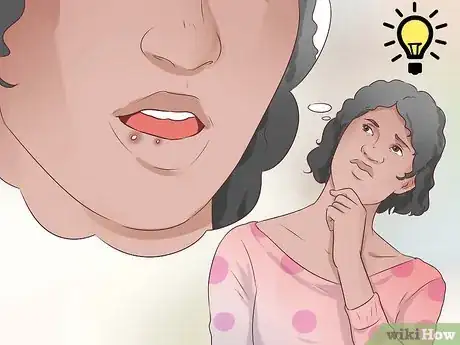
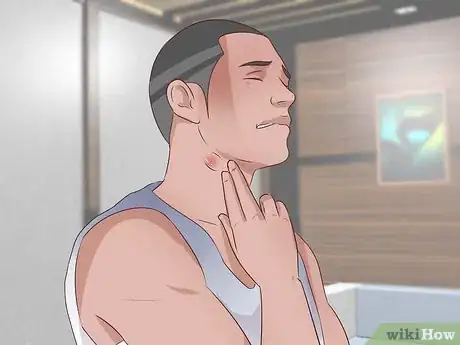
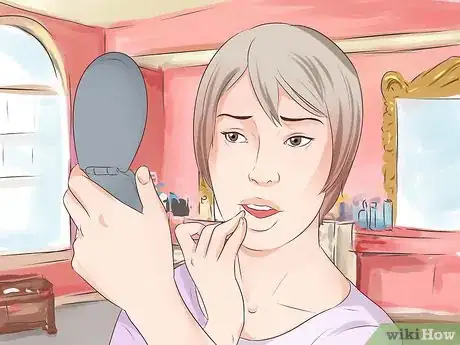
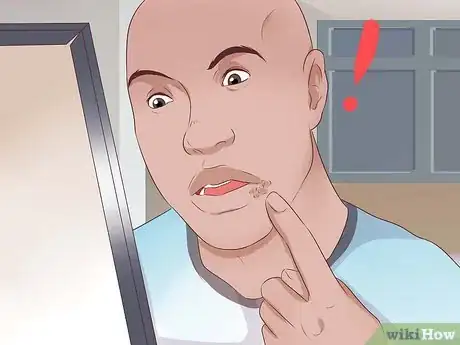
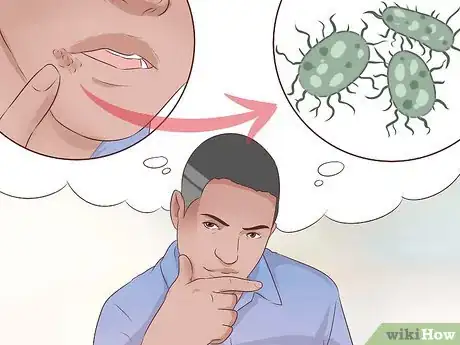
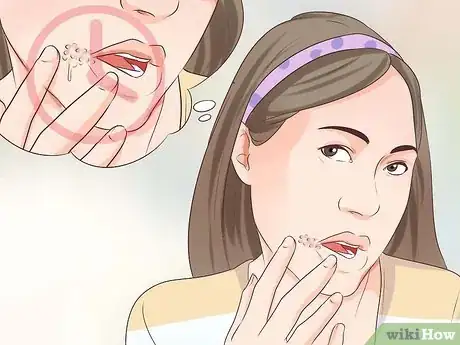
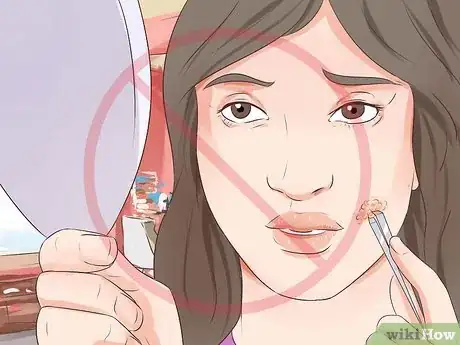
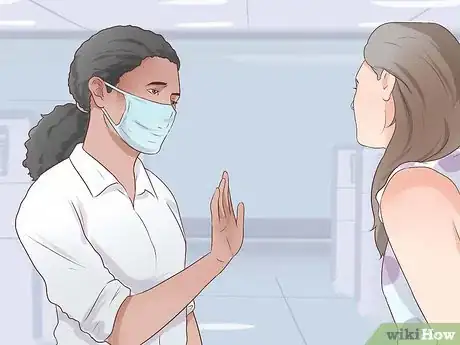
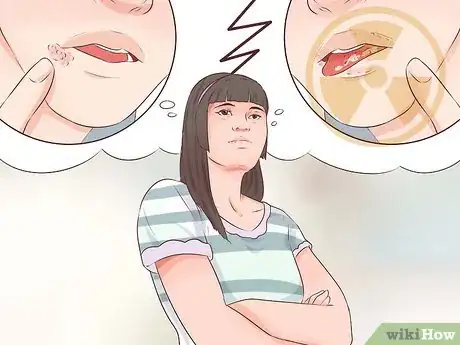
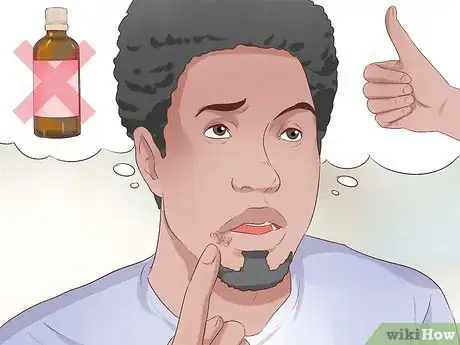
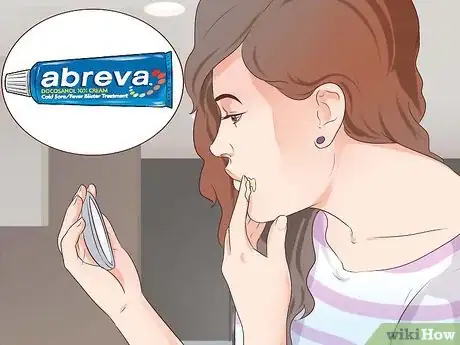
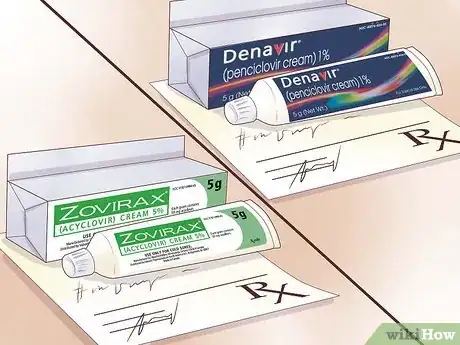
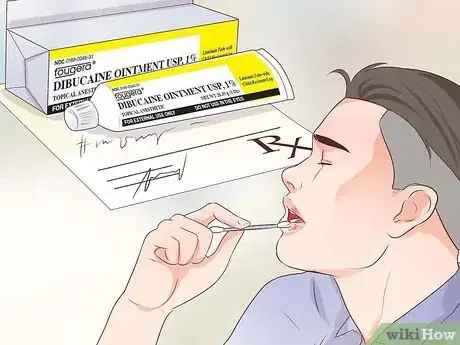
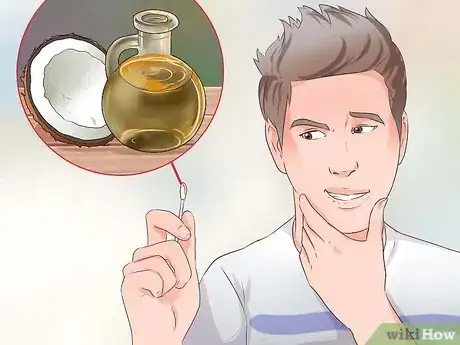
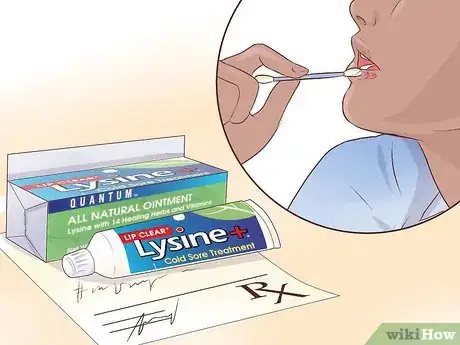
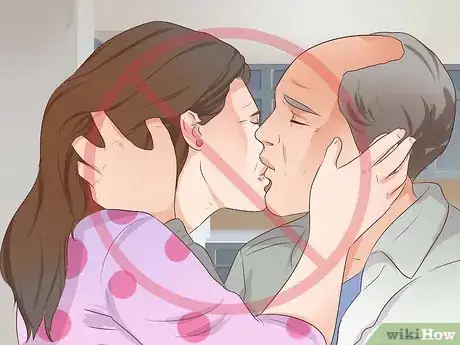
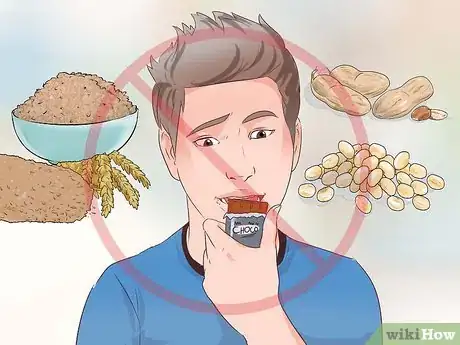

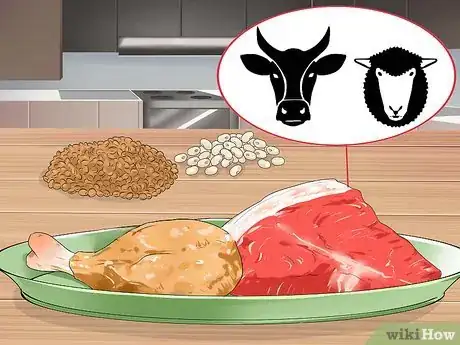
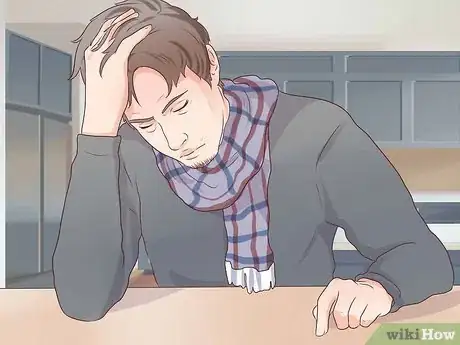
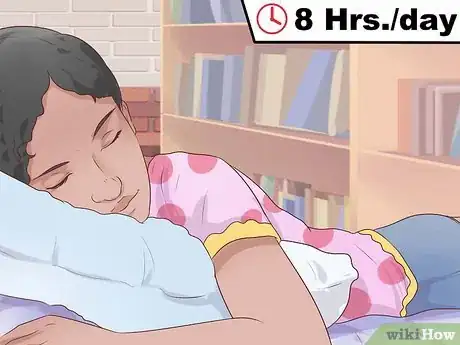
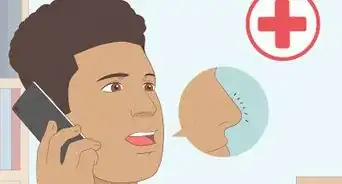
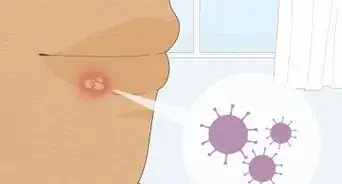
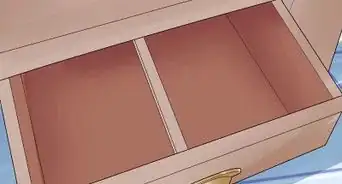

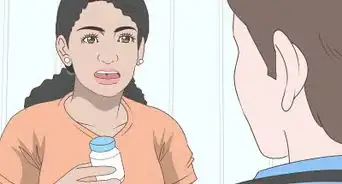

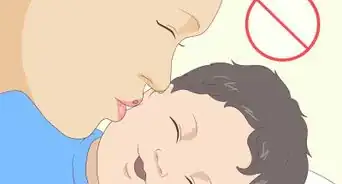
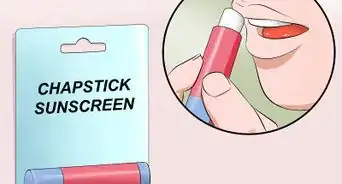
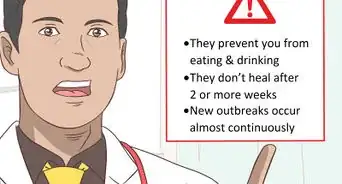
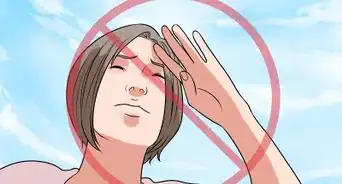
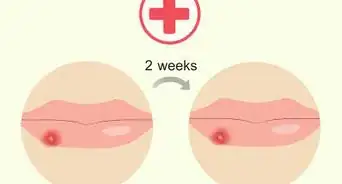
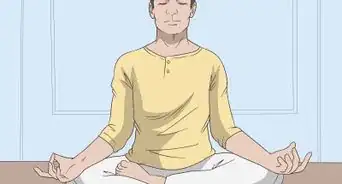








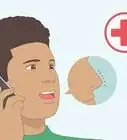
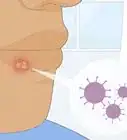
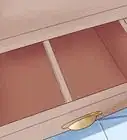




































Medical Disclaimer
The content of this article is not intended to be a substitute for professional medical advice, examination, diagnosis, or treatment. You should always contact your doctor or other qualified healthcare professional before starting, changing, or stopping any kind of health treatment.
Read More...